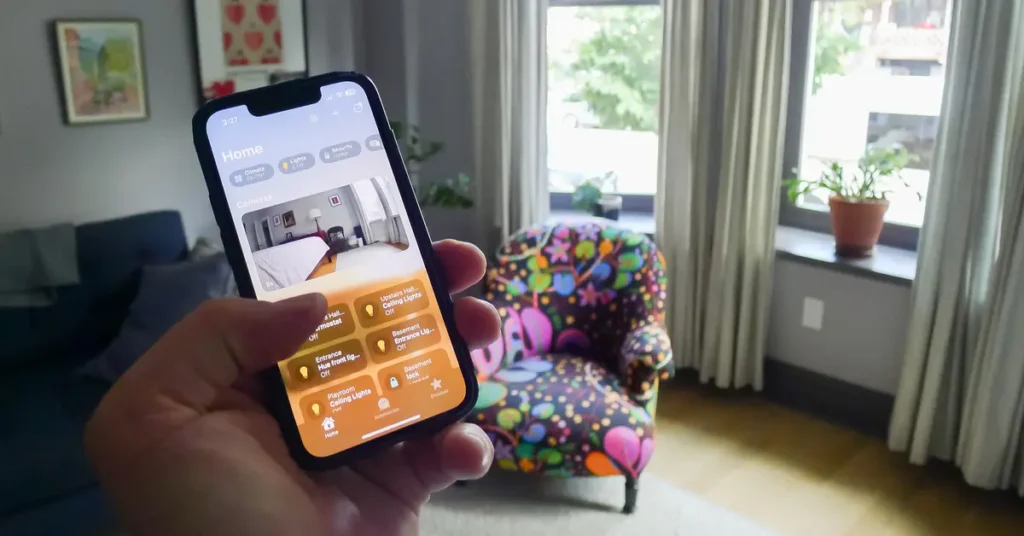If you’ve come across the Apple HomeKit on your iPhone or iPad or stumbled upon discussions about HomeKit online, chances are that you’re curious about what it is and how it works.

But fret not! In this article, we will provide a comprehensive understanding of everything there is to know concerning Apple’s smart home ecosystem -HomeKit.
Understanding what a Homekit is?
HomeKit can be thought of as a centralized hub, simplifying the management and control of all smart home devices in your residence through one app.
While HomeKit and Apple Home are frequently confused with each other, “Apple Home” commonly pertains to their iOS application while “HomeKit” refers more specifically to the technology that links everything together behind the scenes.
Apple’s HomeKit competes with Amazon’s Alexa and Google Home, which also provide similar services. Nevertheless, unlike its counterparts – Alexa and Google Home- all smart home devices must go through a certification process to function properly on Apple’s platform.
Once you see the “Works With Apple Home” badge displayed on your device or gadget, it confirms that it supports this system behind the scenes.
Although attaining this certification ensures a superior level of security and privacy for HomeKit-supported devices, it can result in limited compatibility with fewer smart home products. Furthermore, compatible devices tend to come at higher price points.
While there are numerous advantages to selecting HomeKit over alternative ecosystems, it is not without its flaws.
What is the Function of HomeKit?
Simply put, HomeKit links your smart home gadgets to Apple products and enables seamless interaction. iOS, iPadOS, and macOS incorporate built-in versions of HomeKit for easy access.
Additionally, if you have configured the iPhone Control Center and created widgets for your connected gadgets, HomeKit can also efficiently oversee those commands as a traffic controller.
With Apple Home, you can monitor your supported devices by turning them on and off as well as managing their settings.
Additionally, any controls that align with your devices are also manipulatable via this platform. Further complementing its utilities is its function in device automation scheduling through HomeKit integration.
However, it’s important to acknowledge that remote management of these features beyond home premises requires access to Wi-Fi connectivity from either an iPad or a specific range of applicable appliances such as Apple TV or so forth at designated locations within your residence when using HomeKit technology.
The compatibility of HomeKit extends to Siri, Apple’s intelligent voice assistant.
This allows for the remote regulation of smart-home devices through verbal commands such as adjusting temperature via a thermostat or shutting off lights with a spoken prompt.
In short, HomeKit manages all functions related to your home without any extra effort on your part — from initial setup down to daily use it works quietly behind the scenes, ensuring seamless operation at every turn.
Furthermore, iOS 18 will bring forth a range of new HomeKit capabilities that Apple has revealed. These include guest access, robotic vacuum control, Airplay Spatial Audio support, and energy monitoring for your home.
To delve deeper into these features, we’ve listed the topmost exciting additions to Apple Homecoming with iOS 18.
Is Homekit Compatible with all devices?
With a focus on interoperability, Apple has dedicated significant efforts towards ensuring that an extensive array of smart home devices can seamlessly integrate with HomeKit.
To further this goal, the tech giant also holds membership in the Connectivity Standards Alliance (CSA), which seeks to establish harmonized communication standards for connected-home products.
Moreover, there are encouraging indications suggesting that Matter—the CSA’s standard—could potentially be supported by HomeKit down the line.
Despite its advancements, HomeKit does not yet cover every device. To verify if your smart devices are compatible, locate the “Works With Apple Home” emblem on their packaging.
Popular brands like Philips Hue, Ecobee, Schlage, and WeMo offer Apple HomeKit-compatible devices.
Conclusion
With Apple’s HomeKit, you can manage your smart home gadgets from various devices like iPhones, iPads, and Macs.
The Apple Home app and Siri play a prominent role in handling all the controls associated with intelligent homes while staying discreetly behind the scenes.
Moreover, being an innate part of Apple software that is safer than other similar ecosystems adds to its attractiveness factor – not costing anything either!
Bear in mind though that it requires additional accreditation for compatibility purposes; nonetheless, there are ample options available among compatible smart gadgets.





